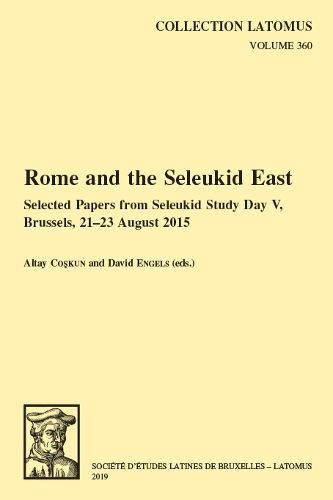Readings Newsletter
Become a Readings Member to make your shopping experience even easier.
Sign in or sign up for free!
You’re not far away from qualifying for FREE standard shipping within Australia
You’ve qualified for FREE standard shipping within Australia
The cart is loading…






Seleukos I (312-281) was the strongest among the Successors of Alexander
the Great, and his territory extended as far as Thrace in the West and
Pakistan in the East for over a century. His kingdom reached a new
pinnacle under Antiochos III (223-187), who combined military vigour with
political skill, but also bears responsibility for its harsh defeat at the
hands of the Romans, the ascending superpower in the Mediterranean. This
failure did not yet trigger the dynasty’s collapse albeit. It was
resilient and re-established itself as the leading power in the Near East
under Antiochos IV (175-164), who was able to maintain friendship with
Rome. Gradually, however, Seleukid rule was reduced to Syria or parts
thereof by 129. The book tries to redress the balance of Seleukid
weaknesses and strengths. Case studies either focus on power, politics and
ideology of the Seleukid centre, or on continuity and change in
2nd-century Anatolia, Judaea and Babylon, before trying to integrate into
a braoder picture the factors that led to Seleukid disintegration.
$9.00 standard shipping within Australia
FREE standard shipping within Australia for orders over $100.00
Express & International shipping calculated at checkout
Seleukos I (312-281) was the strongest among the Successors of Alexander
the Great, and his territory extended as far as Thrace in the West and
Pakistan in the East for over a century. His kingdom reached a new
pinnacle under Antiochos III (223-187), who combined military vigour with
political skill, but also bears responsibility for its harsh defeat at the
hands of the Romans, the ascending superpower in the Mediterranean. This
failure did not yet trigger the dynasty’s collapse albeit. It was
resilient and re-established itself as the leading power in the Near East
under Antiochos IV (175-164), who was able to maintain friendship with
Rome. Gradually, however, Seleukid rule was reduced to Syria or parts
thereof by 129. The book tries to redress the balance of Seleukid
weaknesses and strengths. Case studies either focus on power, politics and
ideology of the Seleukid centre, or on continuity and change in
2nd-century Anatolia, Judaea and Babylon, before trying to integrate into
a braoder picture the factors that led to Seleukid disintegration.